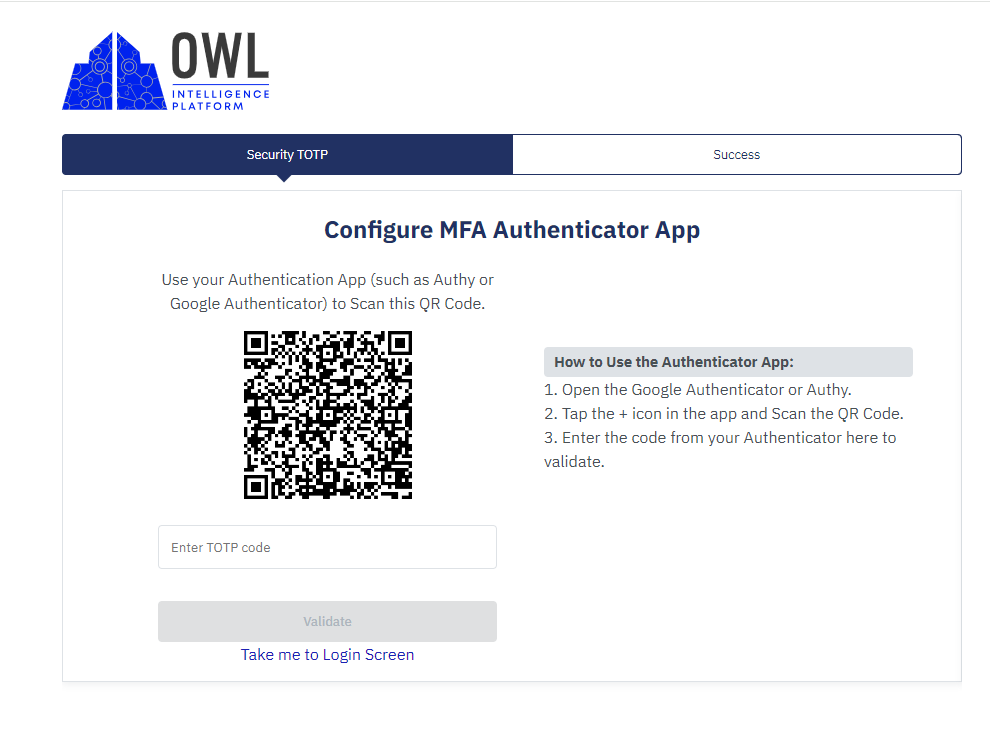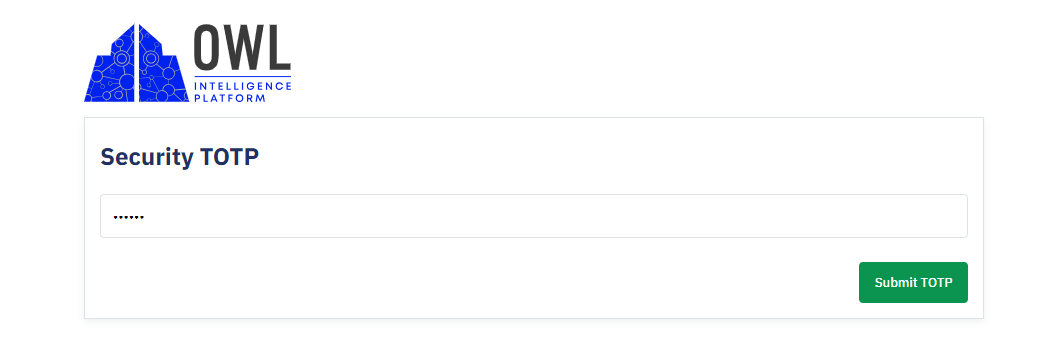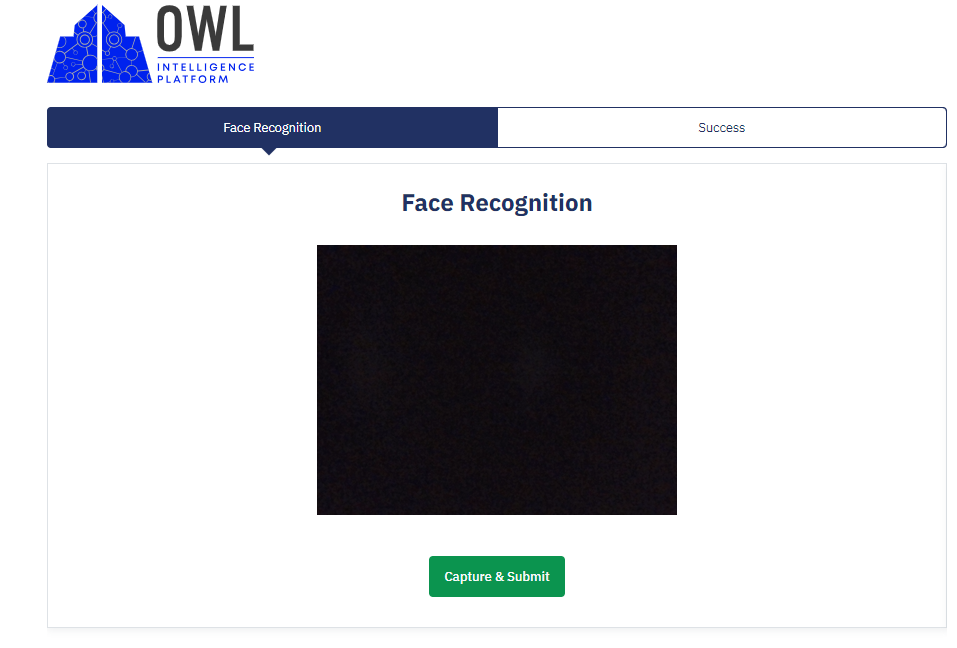- 25 Sep 2024
- 2 Minutes to read
- DarkLight
MFA (Multifactor Authentication)
- Updated on 25 Sep 2024
- 2 Minutes to read
- DarkLight
OWL Software Edition Module or Feature Available In
Whooster
Standard
Advanced
Enterprise
Enterprise Plus
Enterprise Advanced
Smart City
In the realm of security, OWL distinguishes itself by offering three robust types of first-level multifactor authentication (MFA), each tailored to enhance the protection of user accounts and sensitive data. These authentication methods—Security Question and Answer, Time-based One-Time Password (OTP), and Facial Recognition—provide varying layers of security, ensuring that access to the OWL platform remains secure and reliable. Here’s an expanded look at each type of first-level MFA within OWL:
Security Question and Answer
Time-based OTP
Facial Recognition
Security Question and Answer: This is the default MFA set when the user is added to the organization. If this MFA is set the user has to answer the security answer after login with a valid username & password. The security answer is set by the user during the first login process.
If the security answer does not match it will not allow further login to OWL.

Time-based OTP: The admin can set the Time-based OTP at the organization level by selecting the “Time-based OTP” radio button on the security page.

If the MFA is set to TOTP then the user must scan the barcode after the username & password login for the first time using Authy or Google Authenticator apps on their device. Next time during the login they can provide the TOTP generated in their device and use it to log into the application.


Facial Recognition: If the security policy for the user is set to “Facial recognition” during the first login they must capture the image of the face. Next time when the same user logins it will verify the face and it will allow to log into the application.

First-level MFA setup can be done from the Organization level, Role-License level, and User level.
The User level MFA setup will be considered first, Then the Role and License level. If none of these settings are available for the user, then Organization level MFA will be given priority during login.

